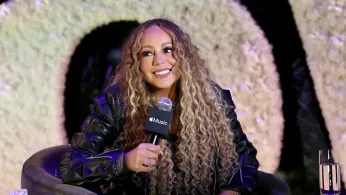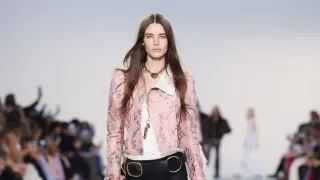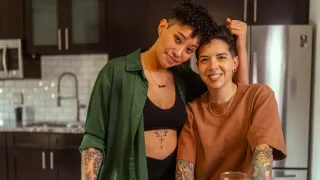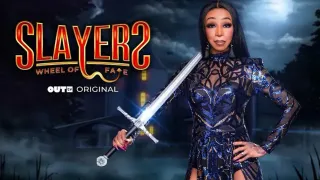
6 hours ago
Mariah Carey Unveils Secrets of Her ’90s Grunge Album
READ TIME: 3 MIN.
Mariah Carey, an icon celebrated for her powerhouse vocals and pop ballads, has peeled back the curtain on a hidden chapter in her career: a grunge album crafted in the mid-1990s, now resurfacing with new relevance for both music and LGBTQ+ communities. On October 1, Carey appeared on “The Tonight Show Starring Jimmy Fallon,” sharing a clip from “Someone’s Ugly Daughter,” a previously unreleased project created under the pseudonymous band Chick. Carey’s reveal included not only music samples but candid insights into the album’s origins—and its queer undertones .
The genesis of “Someone’s Ugly Daughter” dates to the recording sessions for Carey’s acclaimed pop album “Daydream.” While working on hits like “Fantasy” and “Always Be My Baby,” Carey sought a creative outlet away from the expectations of her label and the public. “I was just rebelling because I was working on ‘Daydream,’” Carey explained to Fallon. “At the end of the night, when the band was still there, I’d say, ‘Can you play, like…?’ You know, just play this so that I can get out of my head” .
The album’s cover, featuring lipstick marks and a real cockroach, was drawn by Carey herself—except for the insect, which she clarified was not her work. “I drew this cover. I didn’t draw the roach. The roach is real,” she joked with Fallon, highlighting the album’s raw and irreverent aesthetic .
One of the album’s tracks, “Prom Queen,” stands out for its explicitly queer narrative. The lyrics tell the story of a boy who, on his sixteenth birthday, dreams of being the next prom queen. Carey let Fallon play a snippet, drawing praise from Questlove, who called it “her best record.” The song’s themes of gender expression and self-discovery resonate strongly with LGBTQ+ listeners, offering a rare glimpse of queer storytelling in mainstream 1990s music .
In recent interviews, Carey has emphasized the importance of authenticity and artistic freedom, noting that the album emerged from her need to break free from imposed norms. “People have been asking me about it, and it’s something that I love so much,” Carey said. “And we might see it in 2025, probably a little bit later than that” .
Despite Carey’s enthusiasm, the project faced significant obstacles. In the ’90s, her label Sony refused to release the album with her lead vocals, forcing Carey to credit her friend and co-writer Clarissa Dane as the lead singer, while Carey remained in the background. “I always regretted not putting it out, but they kind of stopped me at that point. You know, it was Sony at the time. We love Sony now, but back then… a little controlling,” Carey reflected .
The label’s decision to shelve the album and release a version with Carey on backing vocals only reinforced the industry’s tendency to stifle unconventional artistic expression—especially when it defied gender and genre norms.
The recent resurgence of “Someone’s Ugly Daughter” has sparked widespread interest, with many fans—particularly those in the LGBTQ+ community—seeing the album as a symbol of personal and artistic liberation. Questlove and Fallon’s enthusiastic endorsements have fueled speculation about an official release, while Carey herself has hinted at future plans to share the project with the world .
For LGBTQ+ audiences, the album’s themes of rebellion, gender fluidity, and self-acceptance are particularly resonant. Songs like “Prom Queen” provide rare visibility for queer stories in a genre—and an era—where such narratives were often marginalized.
Carey’s willingness to revisit and share this hidden work signals a broader shift in pop culture, where artists are increasingly empowered to explore and celebrate diverse identities. As the world awaits the album’s official release, “Someone’s Ugly Daughter” stands as a testament to Carey’s enduring commitment to authenticity and inclusivity.
The album’s journey from secret side project to public celebration underscores the importance of artistic freedom—not only for Carey, but for all creators whose voices challenge convention and inspire community. Whether “Someone’s Ugly Daughter” arrives in 2025 or later, its legacy as a queer, rebellious, and unapologetically authentic work is already secure .






